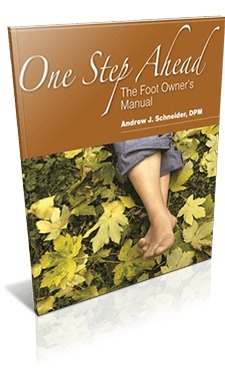 Does it seem like your sucks are cutting off circulation to your feet? The problem may lie with you, not with your foot covering. You see, socks are made in all shapes and sizes. And it's true that you may be facing a problem because your socks have a tight band around the calf. This problem will be worse if you are diabetic or if you just generally have poor circulation. And it's not an uncommon issue. In fact, many socks are made with tight calf bands to prevent them from slipping down...very important in a sock! So, what can you do if your socks cut off your circulation? And what other kinds of socks could cause problems for your feet? Here's what you need to know!
Does it seem like your sucks are cutting off circulation to your feet? The problem may lie with you, not with your foot covering. You see, socks are made in all shapes and sizes. And it's true that you may be facing a problem because your socks have a tight band around the calf. This problem will be worse if you are diabetic or if you just generally have poor circulation. And it's not an uncommon issue. In fact, many socks are made with tight calf bands to prevent them from slipping down...very important in a sock! So, what can you do if your socks cut off your circulation? And what other kinds of socks could cause problems for your feet? Here's what you need to know!
Socks Cutting Off Circulation
As we just explained, the tight band at the top of socks can, indeed, affect your circulation. Compressing your calf can close off the arteries providing blood to the foot. In turn, your reduced blood flow can lead to intense pain that appears after walking and only improves when your rest. Limits on blood flow also can increase the possibility of complications such as skin ulcers. (These symptoms could also be a warning sign of PAD, or peripheral arterial disease.)
Other Socks That Hurt Your Feet
To prevent problems stemming from wearing the wrong socks, you have to choose socks that will not cause you problems. First, avoid socks with tight bands at the calf, as these could reduce blood flow to your feet. Next, try to steer clear of very dark colored socks. (Or wash them well before you wear them.) While this rule may sound strange, dark socks can irritate your skin when dyes rub off on your feet. They could also make your feet look bruised, confusing daily foot checks for patients with diabetes. So, when possible, aim for lighter-colored sock selections.
Next, pay attention to the material from which your socks are made. Cotton or wool socks can trap moisture against your feet. That can create an environment in which fungus thrives, increasing your risk for athlete's foot infections. To protect your feet, choose socks made from synthetic materials designed to wick moisture away from your feet.
Of course, this should go without saying, but we'll mention it anyway. Never wear dirty socks. And toss out socks that have visible holes or worn patches. Otherwise, you'll increase your risk for foot infections as well as blisters.
Now, while tight socks can cut off circulation, loose socks are also a concern. A sock that slips down your foot can bunch up in your shoe, causing friction and increasing your risk for blisters and irritation. As such, you;ll need to look for the Goldilocks-fit of socks. Luckily, we've got tips on what to look for.
Choosing Socks That Don't Cut Off Circulation
Struggling with socks that cut off circulation? It's time for a change! Luckily, you can find many brands of diabetic socks that provide a looser fit around the calf. But, if you do need some compression because of swelling or vein insufficiency, you don't have to wear those tight, uncomfortably banded socks. Instead, choose prescription compression socks that provide uniform compression through the calf. We can help you find the perfect pair for your health needs.
Both diabetic socks, as well as compression socks, are readily available. Houston podiatrist Dr. Andrew Schneider carries both at Tanglewood Foot Specialists. If you are unsure if your current socks are right for you, contact our office for an immediate appointment.















